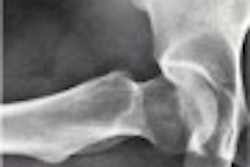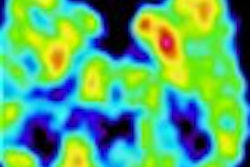Postmenopausal women who take risedronate (Actonel) weekly get bone antiresorptive benefits that are equivalent to those in patients who take a daily dose based on bone densitometry results, according to a presenter at the 2003 American Association of Clinical Endocrinologists meeting in San Diego.
"These results are encouraging because the once-weekly regimen is very popular and convenient," said Dr. Earl Sod, the senior scientist in clinical development in the musculoskeletal division at Procter & Gamble Pharmaceuticals in Mason, OH. Procter & Gamble sponsored the study.
Because the daily and weekly dosing regimens produce similar results, physicians can comfortably offer the 35-mg once-weekly formulation of risedronate as an alternative to 5-mg daily dosing, Sod said. They sought to compare the efficacy of a daily dose of 5 mg with two weekly formulations, one at 35 mg weekly and the other at 50 mg weekly.
The study population consisted of 109 women with postmenopausal osteoporosis. The investigators assessed changes in lumbar spine bone mineral density (BMD) at baseline and at one year with dual-energy x-ray absorptiometry (DEXA). The subjects were randomized to either of the weekly doses or to the daily dose.
The investigators found that patients’ lumbar spine BMD changes were equivalent in all three groups. They concluded that both of the weekly doses were as efficacious as the daily dose.
The investigators also obtained iliac-crest biopsy specimens for the 109 participants at baseline and for 86 participants at Year 2. The investigators found no histologic abnormalities in any of the treatment groups. The investigators concluded that the participants had normal bone quality, even in patients who received the highest dose, 50 mg once weekly.
He and his colleagues found increased bone formation periods in all the treatment groups, as well as significant increases in the daily group and the 35-mg weekly group. These findings confirmed previous data for 5 mg of risedronate daily, Sod said. They found that the median mineralizing surface was approximately 1.5% in all groups at the end of the two-year study period.
The median change in mineral apposition rate (MAR) was positive in all groups, and significantly so in the weekly-dosing groups. This finding led investigators to conclude that risedronate had an anabolic effect.
"Radiologists should find it encouraging that the DEXA data show that the BMDs are the same across doses," said Dr. Paul Miller, commenting on the study. Miller is a clinical professor of medicine at the University of Colorado Health Sciences Center and the medical director of the Colorado Center for Bone Research, both in Denver.
"Other data regarding this study have shown that the biochemical markers of bone turnover went down equally (well)," Miller said. "These surrogate markers, which are highly correlated to bone strength and fracture reduction, were the criteria the FDA used to approve the 35-mg once-weekly formulation."
By Paula MoyerAuntMinnie.com contributing writer
August 14, 2003
Related Reading
Low bone mineral density seen early in diabetic women, August 11, 2003
Bone strength index could help predict fracture risk in older women , July 24, 2003
Osteoporosis underdiagnosed in patients with vertebral compression fractures, April 24, 2003
Copyright © 2003 AuntMinnie.com



















